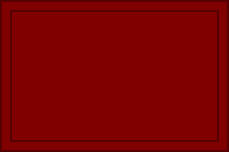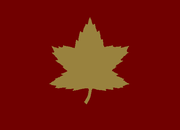| It has been suggested that [[::Land Force Atlantic Area|Land Force Atlantic Area]] be merged into this article. (Discuss) Proposed since July 2013. |
| 5th Canadian Division | |
|---|---|
 5th Canadian Division formation patch | |
| Active |
Feb 1917- Feb1918 1939–1945 2013-present |
| Country | Canada |
| Allegiance | Allies |
| Branch | Canadian Army |
| Type |
Infantry Armoured |
| Nickname(s) | The Mighty Maroon Machine |
| Engagements |
Italian Campaign North-West Europe |
| Commanders | |
| Notable commanders | Bert Hoffmeister |
The 5th Canadian Division was first created as a formation of the Canadian Expeditionary Force during the First World War. It was stood down during the war only to be reactivated through the renaming from '1st Canadian Armoured Division' to the 5th Canadian Armoured Division during the Second World War. In both wars the division was recognized by the distinctive Maroon patch worn on the sleeve of its soldiers.
First World War[]
The 5th Canadian Division of the Canadian Corps was formed during World War I. The 5th began assembling in Britain in February, 1917, but was broken up in February 1918 before it was fully formed. Its men were used as reinforcements for the other four Canadian divisions, helping to maintain the over-strength Divisions of 22,000-25,000 with more than 100,000 men Total.[citation needed]It was reactivated in 2013.[1]
Infantry Units[]
13th Canadian Brigade:
- 128th (Moose Jaw) Battalion Canadian Infantry. February 1917 - May 1917. Absorbed by the 15th Canadian Reserve Battalion;
- 134th (48th Highlanders) Battalion Canadian Infantry. February 1917 - February 1918. Absorbed by the 12th Canadian Reserve Battalion;
- 160th Battalion Canadian Infantry. February 1917 - February 1918. Absorbed by the 4th Canadian Reserve Battalion;
- 164th (Halton and Dufferin) Battalion Canadian Infantry. May 1917 - April 1918. Absorbed by the 8th Canadian Reserve Battalion;
- 202nd Battalion Canadian Infantry. February 1917 - May 28, 1918. Absorbed by the 9th Canadian Reserve Battalion;
- 208th Battalion Canadian Infantry. May 1917 - January 3, 1918. Absorbed by the 2nd and 3rd Canadian Reserve Battalions.
14th Canadian Brigade:
- 125th Battalion Canadian Infantry. February 1917 - April 16, 1918. Absorbed by the 8th Canadian Reserve Battalion;
- 150th (Carabiniers Mont Royal) Battalion Canadian Infantry. February 1917 - February 15, 1918. Absorbed by the 6th Canadian Reserve Battalion;
- 156th (Leeds and Grenville) Battalion Canadian Infantry. February 1917 - February 15, 1918. Absorbed by the 6th Canadian Reserve Battalion;
- 161st Battalion Canadian Infantry. February 1917 - February 15, 1918. Absorbed by the 4th Canadian Reserve Battalion.
15th Canadian Brigade:
- 104th (New Brunswick) Battalion Canadian Infantry. February 1917 - February 15, 1918. Absorbed by the 13th Canadian Reserve Battalion;
- 119th (Algoma) Battalion Canadian Infantry. February 1917 - April 16, 1918. Absorbed by the 8th Canadian Reserve Battalion;
- 185th (Cape Breton Highlanders) Battalion Canadian Infantry. February 1917 - February 15, 1918. Absorbed by the 17th Canadian Reserve Battalion;
- 198th (Canadian Buffs) Battalion Canadian Infantry. April 1917 – March 9, 1918. Absorbed by the 3rd Canadian Reserve Battalion;
- 199th (Duchess of Connaught's Own Irish Canadian Rangers) Battalion Canadian Infantry. February 1917 - April 1917. Absorbed by the 23rd Canadian Reserve Battalion.
Attached Troops:
- 164th (Halton and Dufferin) Battalion Canadian Infantry. February 1917 - May 1917. To the 13th Canadian Brigade;
- 198th (Canadian Buffs) Battalion Canadian Infantry. February 1917 - April 1917. To the 15th Canadian Brigade;
- 208th Battalion Canadian Infantry. February 1917 - May 1917. To the 13th Canadian Brigade;
- 236th (MacLean Highlanders) Battalion Canadian Infantry. February 1917 - May 1917. Disbanded on March 13, 1918.
- 12 Canadian Field Ambulance
5th Canadian (Armoured) Division[]
5th Canadian (Armoured) Division was a Canadian division during World War II. Following its redesignation from '1st Canadian Armoured Division', the bulk proceeded overseas in one main convoy, arriving in the UK at the end of November 1941.
The 5th Armoured spent two years of the war uneventfully in the UK, finally transferring to the Mediterranean in November 1943 to join I Canadian Corps. The division moved without its tanks and vehicles, inheriting heavily used equipment as a legacy from the British 7th Armoured Division who they relieved in Italy. The majority of the vehicles were completely worn out, having first been issued in North Africa or were two-wheel drive – useless in Italy. It took several months for the division to be fully equipped with new vehicles, including M4 Shermans. Only the 11th Infantry Brigade was committed prior to 31 January 1944.[citation needed].[2]
The 5th Armoured took part in the Italian Campaign until the end of 1944 seeing notable action on the Hitler Line after the Allied breakthrough at Cassino in May 1944 and also during Operation Olive on the Gothic Line in August 1944. During the latter battle its single infantry brigade was augmented by a second, which was raised using reinforcements and units serving in other roles. Among them was 4th Princess Louise Dragoon Guards – 1st Canadian Division's armoured recce unit. As with other Allied armoured divisions in the Mediterranean, local resources were used to establish an additional infantry brigade, the 12th Canadian Infantry Brigade.[citation needed] Based on the colour of its shoulder patch, the division became known as the "Mighty Maroon Machine".[3]
In January 1945, the division moved by truck, train, and naval transport to Belgium via Livorno and Marseille. After arriving, it disbanded the 12th Brigade, and re-equipped to join the First Canadian Army in time to participate in the final offensives across the Rhine.[citation needed]
Commanding officers[]

B.M. Hoffmeister
- Jun 1941 to Jan 1943 Major-General E.W. Sansom
- Jan 1943 to Oct 1943 Major-General C.R.S. Stein
- Oct 1943 to Jan 1944 Major-General G.G. Simonds
- Jan 1944 to Mar 1944 Major-General E.L.M. Burns
- Mar 1944 to Jun 1945 Major-General B.M. Hoffmeister
Organization until July 1944 and after March 1945[]

Formation sign used to identify vehicles of the 5th Canadian (Armoured) Division
5th Canadian Armoured Brigade[]
- 2nd Armoured Regiment (Lord Strathcona's Horse (Royal Canadians))
- 5th Armoured Regiment (8th Princess Louise's (New Brunswick) Hussars)
- 9th Armoured Regiment (The British Columbia Dragoons)
- The Westminster Regiment (Motor)
11th Canadian Infantry Brigade[]
- 11th Independent Machine Gun Company (Princess Louise Fusiliers)
- The Perth Regiment
- The Cape Breton Highlanders
- The Irish Regiment of Canada
- 3rd Armoured Reconnaissance Regiment (The Governor General's Horse Guards)
- 11th Infantry Brigade Ground Defence Platoon (Lorne Scots)
Other Units[]
- 17th Field Regiment, RCA
- 8th Field Regiment (Self-Propelled), RCA
- 4th Anti-tank Regiment, RCA
- 5th Light Anti-Aircraft Regiment, RCA
- "G" Squadron, 25th Canadian Armoured Delivery Regiment (The Elgin Regiment) , Royal Canadian Armoured Corps
- 1 Cdn Field Squadron, RCE
- 10 Cdn Field Squadron, RCE
- 4 Cdn Field Park Squadron, RCE
- 5th Canadian (Armoured) Divisional Signals, RCSigs
- No. 5 Provost Company, Canadian Provost Corps
Organization July 1944 until March 1945[]
5th Canadian Armoured Brigade[]
- 2nd Armoured Regiment (Lord Strathcona’s Horse (Royal Canadians))
- 5th Armoured Regiment (8th Princess Louise’s (New Brunswick) Hussars)
- 9th Armoured Regiment (The British Columbia Dragoons)
11th Canadian Infantry Brigade[]
- 11th Independent Machine Gun Company (Princess Louise Fusiliers)
- The Perth Regiment
- The Cape Breton Highlanders
- The Irish Regiment of Canada
- 11 Canadian Infantry Brigade Ground Defence Platoon (Lorne Scots)
12th Canadian Infantry Brigade (raised in August 1944)[]
- 12th Independent Machine Gun Company (Princess Louise Fusiliers)
- The Westminster Regiment (Motor)
- 4th Princess Louise Dragoon Guards (from 1st Canadian Infantry Division)
- The Lanark and Renfrew Scottish Regiment (from Corps anti-aircraft assets)
- 3rd Armoured Reconnaissance Regiment (The Governor General's Horse Guards)
- 12 Canadian Infantry Brigade Ground Defence Platoon (Lorne Scots)
Other Units[]
- 17th Field Artillery Regiment
- 8th Field Artillery Regiment (Self-Propelled)
- 4th Anti-tank Regiment
- 5th Light Anti-Aircraft Regiment
- "G" Squadron, 25th Canadian Armoured Delivery Regiment (The Elgin Regiment), Royal Canadian Armoured Corps
- 1 Cdn Field Squadron, RCE
- 10 Cdn Field Squadron, RCE
- 4 Cdn Field Park Squadron, RCE
- 5th Canadian (Armoured) Divisional Signals, RCSigs
- No. 5 Provost Company, Canadian Provost Corps
Land Forces Atlantic Area and 2013 reactivation[]
LFAA was created on 1 September 1991, taking command of what was previously the militia areas and the Regular Force Army units and formations in Atlantic Canada. At that point in time, the Militia Areas ceased to exist, and the subordinate Militia Districts were reorganised.[4]
Later that decade, the reserve force districts were again reorganized into two Canadian Brigade Groups.
In 2013, it LFAA was renamed 5th Canadian Division. With this change of name, the formation was also granted the identifying patch and historical lineage of the division that served in the two world wars.
Notes[]
- ↑ http://www.forces.gc.ca/site/news-nouvelles/news-nouvelles-eng.asp?id=4880
- ↑ Dancocks p208-209
- ↑ Mark Zuehlke, The Liri Valley: Canada's World War II Breakthrough to Rome, Douglas & McIntyre Ltd., Vancouver, 2003, p 58.
- ↑ "Domestic Military Organization 1900-1999". Canadian Soldiers.com. 22 February 2013. http://www.canadiansoldiers.com/organization/districts.htm.
References[]
- Dancocks, Daniel G. (1991). The D-Day Dodgers. Toronto: McClelland & Stewart Inc.. ISBN 978-0-7710-2544-0.
- Groningen, J. Niemeijer "History of 17th Field Regiment, Royal Canadian Artillery, 5th Canadian Armoured Division" by (J. Niemeijer Groningen, 1946)
- Zuehlke, Mark, "The Liri Valley: Canada's World War II Breakthrough to Rome", Douglas & McIntyre Ltd., Vancouver, 2003
See also[]
| ||||||||
The original article can be found at 5th Canadian Division and the edit history here.